Posted by Elena del Valle on January 20, 2016

The StockPKG office is in Dana Point, California
Photo: StockPKG
While some speculate and worry about another recession, the management of StockPKG, a Dana Point, California discount business supply company founded in 2012, is hoping for triple digit growth. That was the growth the company experienced in the previous three years. To further the likelihood of such growth the company plans a catalog launch in March and hired Driven PR, an integrated marketing communications company.
The distributor plans to add 35,000 products in 2016, totaling 75,000 in all, as well as offering educational and consulting resources for those looking for assistance when starting or growing their business. The company has 25 employees and foresees growth in the sales and customer service teams. By the end of 2016, the company expects to have a national network of up to 75 employees.
“Our mission is to be a one-stop-shop for all business supply and flexible packaging needs for businesses and customers all over America,” said Sean Rudner, owner and president of the company, by email via a Driven PR representative. “We offer consulting services to businesses with complex packaging needs who may not know where to go or how to best service their customers. StockPKG’s customer service representatives are educated and always available to consult with businesses about their packaging options. We genuinely care about our customers and are passionate about seeing their businesses grow.”
The top sellers are Shipping Mailers, Clear Stand Up Pouches and Stretch Wraps. In addition to StockPKG’s online marketplace, the company offers consulting services to businesses with complex packaging needs. Powered by Global Plastic Supply, the company serves businesses nationwide through its website, by phone or in person.
Posted by Elena del Valle on January 15, 2016

Dream Things True
Photos: Kenzie Tainow, St. Martin’s Griffin
Despite an already busy academic and personal life Marie Marquardt dedicated part of her time over five years to write and publish Dream Things True (St. Martin’s Griffin, $18.99), her first fiction book, hoping to make readers 13 and older understand that “Undocumented immigration is complicated, and it’s so often misrepresented in the sound bites we hear on the news. I want to give readers a chance to see this issue through the eyes of love, and to be reminded that love is more powerful than fear.”
The 330-page paperback book tell the story of a teenage couple who live in the same town and fall in love only to be torn apart by circumstances related to the young woman’s immigration status. The undocumented minor, an illegal resident of the United States since she was two years of age who excels in school and has a loving family, and her love interest face the challenges of her situation and the complications brought on by immigration, young love and family.
“Because I’ve written non-fiction books about undocumented immigration, I often get asked to talk with groups of non-immigrants about these issues,” Marquardt said by email when asked what prompted her to write the book. “I know a lot of facts and figures, and these help people think about immigration in new ways, but I find that what really matters is relationship – knowing and loving a person who faces these issues is what makes a person care. Not everyone gets the chance to know and love an undocumented immigrant, but fiction can give us all the opportunity to step into their lives – the lives of immigrants and the lives of people who love them. This is powerful, and I believe it is so important – it helps us to overcome all of the politicized rhetoric, and simply to see each other as human beings deserving of love and respect.”
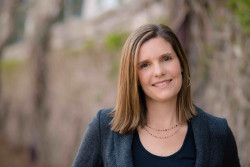
Marie Marquardt, author, Dream Things True
When asked why she chose fiction, she said “I have had the real honor and pleasure of developing close friendships with undocumented immigrants, and I’ve been a part of their children’s lives as they have grown up. I wanted to create a story that draws on the range of experiences I have had with undocumented young adults — that dives into the emotions of those experiences, not just the facts. Plus, writing fiction is so much more fun!”
In May, 2015, the book was named one of five 2015 Book Expo America (BEA) Buzz Books. It has been featured in The Atlanta Journal and Constitution, The Huffington Post, and Mundo Hispanico. She participated in a blog tour around the time of release, and was featured on more than thirty book blogs. This month, her guest post is due to appear on Latin@s in KidLit, and the book is a January 2016 selection for the Las Comadres and Friends National Latino Book Club Conversations with… series.
Marquardt, a college professor in Decatur, Georgia, was inspired by her work with Mexican immigrants in Georgia. For the past five years, she has worked with volunteers to run El Refugio, a nonprofit that offers temporary lodging and support for the loved ones of detained immigrants.

Click to buy Dream Things True: A Novel
Comments:
Filed Under: Books
Posted by Elena del Valle on January 4, 2016
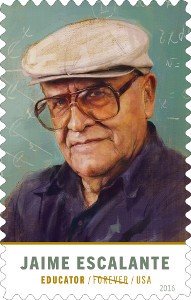
Jaime Escalante US stamp
Photo: United States Postal Service
Following the recommendation of its Citizens’ Stamp Advisory Committee, the United States Postal Service will issue a self-adhesive Forever Stamp to honor Bolivian born educator Jaime Escalante, probably in the summer of 2016. December 31, 2015 would have been his 85 birthday.
Press materials from the Service describe Escalante as a “beloved and charismatic California educator (who) used unconventional methods to inspire his inner-city students not only to learn calculus but also to pass Advanced Placement tests in the subject. With his colleagues at Garfield High School in East Los Angeles, he proved that students judged to be ‘unteachable’ could master even the most difficult subject.”
The design of the stamp with a 49 cent price features Escalante in a digital illustration meant to resemble an oil painting. The illustration is based on a 2005 photograph taken by Jaime W. Escalante in a classroom where his father had taught. The average print run for Forever stamps is in the 20 to 30 million range. The print quantity for the Jaime Escalante Forever Stamp has not been announced. The Postal Service is promoting the stand alone stamp (not part of a collection) through print, TV and broadcast as well as mainstream media, Hispanic media and social media.
“There is no advertising budget,” said Roy Betts at the U.S. Postal Service Corporate Communications office via email. “The Postal Service typically promotes new stamps through media channels and in-store retail messaging in local Post Offices.”
Born to schoolteachers in La Paz, Bolivia Escalante learned to teach by trial and error and by imitating the methods of teachers he had admired as a student. In 1961, Escalante spent a year in the United States as part of President John F. Kennedy’s Alliance for Progress, a program to improve relations between the United States and countries in South America. As part of the program, Escalante attended classes in Puerto Rico and traveled to schools around the country to study their methods.
In 1963, Escalante received his immigration visa and arrived in the United States. He came alone, planning to find a job and housing and then send for his family. Because of his limited English, he had difficulty finding employment. Eventually, he found a job mopping floors in a restaurant, enrolled at Pasadena City College, and brought his wife and son to California. Since his Bolivian teaching credentials did not transfer to the United States he had to start his education from the beginning.
He received his bachelor’s degree in mathematics from California State University in 1973 and then won a prestigious National Science Foundation scholarship, which allowed him to study full time and earn his teaching credentials a year later. He quickly found a job at Garfield, a school in crisis with high dropout rates and gang violence, and in jeopardy of losing its accreditation.
Fame came to Escalante in an unexpected way when in 1982, 18 of his students took the Advanced Placement (AP) Calculus Exam. After they, Mexican Americans from a low-income area of Los Angeles, all passed and seven students received fives, the highest score, the ETS College Board accused 14 students of cheating and requested that they retake the exam. Twelve of the 14 did, and all passed the second exam, a different version from the first.
Their story made the national news, making him and his class instant heroes and led to the making of the movie Stand and Deliver. That same year, publication of Escalante: The Best Teacher in America, a book by Washington Post reporter Jay Mathews, brought him additional acclaim. Later Escalante showed how math is used in real life as part of the Public Broadcasting Service (PBS) series Futures. In 1988, Escalante won an award from the Hispanic Heritage Foundation. In 1999, a year after he retired from teaching he was inducted into the National Teachers Hall of Fame. He died on March 30, 2010.
The Citizens’ Stamp Advisory Committee is a group of private citizens with “a passion for American history and a love of stamps, who are appointed by the Postmaster General of the United States.” They are: Gail Anderson, partner, Anderson Newton Design; Peter Argentine founder, Argentine Productions; Justin Bua, artist and creator of genre known as “distorted urban realism;” B. J. Bueno, founder, The Cult Branding Company; Cheryl R. Ganz, author; Henry Louis Gates, Jr., Alphonse Fletcher University Professor, W.E.B. Du Bois Institute for African and African-American Research, Harvard University; Janet Klug, chair, Philatelist; Carolyn Lewis former chief executive of Texwood Furniture Inc; Harry Rinker, antiques and collectibles appraiser; Maruchi Santana, founder, The Brand Extension Katherine C. Tobin, Ph.D., commissioner, U.S. – China Economic and Security Review Commission; and Donna de Varona, TV sports commentator.
Posted by Elena del Valle on January 1, 2016

As the New Year begins we take this opportunity to wish you the best for 2016 and thank you for visiting and following us in 2015.
Posted by Elena del Valle on December 28, 2015

Penance album cover
Photos and song: Mindless Sound Records, LLC
On January 12, 2016, Mindless Sound Records, LLC will release Penance, Lyrical Justifier’s solo debut hip hop album. An aspiring artist for 14 years, Lyrical Justifier wrote all the songs on the album. Scroll down to listen to Music Is My Blood, a single from the new album.

Lyrical Justifier
Lyrical Justifier is the artist name of Stephen C. Sebastiao, the United States born son of a Portuguese father and a Brazilian mother. The album features 17 songs and includes the music of DJ SoulBuck (Beat Minerz Radio, DJ for Doodlebug); Gordon Nelson Jr., a former Gloria Gaynor background vocalist; Jamal Coltrane; Richard Reiter, an Emmy Award Winning Composer and sax and woodwind player; as well as several independent vocalists. Brother Noyze The Mad Musician produced the album and designed the album cover.
Posted by Elena del Valle on December 9, 2015

Millennials have a higher preference for fresh produce than non-Millennials.
Photo: HispanicMPR.com
As older generations decline Millennials are growing and are expected to continue growing over the next five years. Millennials represent one quarter of the population of United States, making them the largest generation at present. At the same time Millennials are highly diverse as a generation. Among Millennials 21 percent is Hispanic, according to Mintel, a data and market research company.
Divided into younger and older Milennials this generation is marrying later, saving money, going to school and or starting a family. They shop differently, like different products, and have different attitudes about food than previous generations, and their income ranges from below average to about average, according to The Millennial Impact: Food Shopping Decisions US, September 2015, a Mintel report.
A Mintel survey indicates that only 47 percent of Older Millennials and 35 percent of Younger Millennials surveyed said they trust large food makers. Among older millennial’s 77 percent wish food manufacturers were more transparent about how they make their products while 70 percent of their younger contemporaries said they wish the same thing. Among non-Millennials 69 percent wished food makers were more transparent about the product that they make.
Millennial’s like shopping for groceries and specialty stores and online, and according to Straight to You, a Mintel Trend, they prefer that products be delivered to them. Both younger and older Millennials have a higher preference for fresh produce than non-Millennials.
Posted by Elena del Valle on December 4, 2015

Publicity From The Trenches
Photos: Sherri Rosen
Because of the fast moving publishing environment gaining attention in the increasingly crowded space of digital and print books can be challenging for new and experienced authors. Some authors know little about publicity self promotion.
Keeping that in mind, Sheri Rosen, head of Sherri Rosen Publicity in New York City wrote a book. She believes that in order to do publicity for a client’s book the publicist must care about the book. She shares tips based on her experience and knowledge with a touch of self promotion in a book for authors. She published Publicity From The Trenches: For Published and Self-Published Authors Paperback, (CreateSpace Independent Publishing, $19.99), a 132-page softcover book (the PDF review copy had 124 pages) March 2015.
The book is peppered with colorful designs and photos, and highlighted quotes. In the section titled The Bottom Line About Publicity, she asks readers, “Imagine publicity with your style, your natural fit, your price, and always your personal satisfaction. Sounds too good to be true, doesn’t it? We thought so, too, but every day, we strive to be a truly custom publicist. That’s our bottom line.”
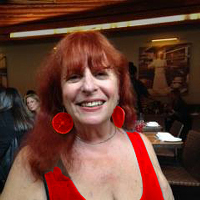
Sherri Rosen, author, Publicity From The Trenches
She points out that authors are a business and it requires promotion. At the same time, they should spend their time writing while someone with the experience and interest in their work promotes their book. About social media she says it can do a help and also it “… can be a tangled web of wasted time…” Further on in the book she talks about the importance of branding, building a platform and personalized publicity.
Before leading her own publicity company for 17 years, Rosen was in live theater in New York City. According to her website, she writes articles for the Examiner.com, Elephant Journal.com, TheGoodmenProject.com, and for her own Redhead’s Rap Blog.

Click to buy Publicity From The Trenches
Comments:
Filed Under: Books
Posted by Elena del Valle on November 20, 2015
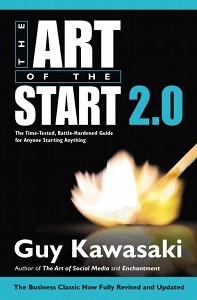
The Art of the Start 2.0
Photo: Guy Kawasaki
This year, Guy Kawasaki, author of The Art of the Start first published in 2004, released an updated edition 64 percent longer than the original book. In it, he shares his ideas on starting a new business or launching a new product or service and advice about social media, public relations, advertising, business plans, pitching, and crowdfunding among other topics.
In The Art of the Start 2.0: The Time-Tested, Battle-Hardened Guide for Anyone Starting Anything (Portfolio Penguin, $29.95), a 326-page hardcover book, he says business plans are part of the past along with advertising and public relations.
The book is peppered with questions and answers sections and exercises.

Guy Kawasaki, author, The Art of the Start 2.0
It is divided into 13 chapters in four sections: Conception, Activation, Proliferation and Obligation. In Chapter 6, Kawasaki says, “I pitch, therefore I am.” Through the sentence he seeks to emphasize the importance he assigns to seeking buy-in through fundraising, agreement, partnerships, sales and hiring staff. He ends the book with a short chapter, recommending that readers seek a greater goal than riches and self promotion. He proposes that they help others who cannot reciprocate.
Kawasaki, chief evangelist, Canva, is trustee of the Wikimedia Foundation, and executive fellow at the Haas School of Business at U.C. Berkeley. Formerly, he was an adviser to the Motorola business unit of Google and chief evangelist of Apple. Some of his other titles include APE (see Entrepreneur, app developer self publish book on digital publishing), The Art of Social Media (see Social media fans share their techniques in book), and Enchantment (see Guy Kawasaki, former Apple executive, discusses Enchantment in book).
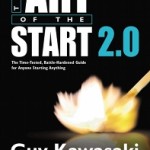
Click to buy The Art of the Start 2.0
Comments:
Filed Under: Books
Posted by Elena del Valle on November 11, 2015

Sergio’s Mahi Mahi
Photos: Sergio’s Restaurants
Twenty percent of sales at Sergio’s Restaurants, a Florida company of Cuban franchise restaurants, are to customers with special dietary needs or preferences. The company caters to people who care about what they eat, be they vegetarian, vegan, lactose intolerant, or paleo-friendly. For example, by the end of November 2015 the restaurants will serve all-natural, hormone and antibiotic free, Wagyu beef fed a vegetarian diet from Jackman Florida Natural Wagyu Beef in Clewiston, Florida.
Citing a Lactose Intolerance: Information for Health Care Providers, a 2006 National Institute of Child Health and Human Development publication that estimates 50 percent to 80 percent of Hispanics suffer from lactose intolerance Sergio’s Restaurants recently added products for people who suffer from lactose intolerance.
“Sergio’s is always thinking outside of the box in order to better serve our customers – and this means making more options available,” said Carlos Gazitua, chief executive officer, Sergio’s Restaurants, via email when asked about why the restaurant chain caters to customers with varied needs. “We respect everyone’s diets.”

Sergio’s dishes
Its La Flaca menu offers healthier alternatives to customers including cauliflower rice, baked (instead of fried) dishes and recipes with coconut oil. Some La Flaca dishes are Grilled Chicken with garlic, herbs, and pico de gallo rice; Mahi-Mahi with pico de gallo; and Turkey Picadillo with Lean, Cuban-Style ground turkey.
Target customers range in age between 25 and 50. Staff reach out to customers via Facebook, Yelp, Twitter, and Instagram. The restaurants appear on NBC Miami for Food Presentations and competed in the Tampa Cuban Sandwich Showdown. Founded in 1975 in Westchester, Florida by Blanca Cabrera, Gazitua’s mother, and her mother, Sergio’s has six restaurants and two cafes in South Florida. They are independently owned.
Posted by Elena del Valle on November 6, 2015
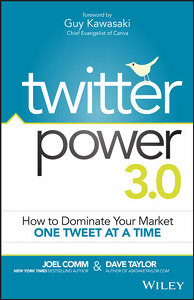
Twitter Power 3.0
Photo: Wiley
Joel Comm and Dave Taylor believe Twitter is a powerful business tool, that viral content doesn’t happen by accident, and that videos and photos are necessary to engage effectively with customers on the social media site. In the updated edition of their book, Twitter Power 3.0: How to Dominate Your Market One Tweet at a Time (Wiley, $20) published this year they discuss measurement, case studies and their strategies to connect on Twitter, among other Twitter related topics.
They are convinced that the power of Twitter is the possibility of immediate feedback and its broad reach. At the end of the book, they share a short list of people they follow on Twitter and recommend to readers.
“Not really,” Taylor said by email when asked if there were any unexpected findings for the new edition. “Twitter is a pretty straightforward system and while things like sponsored hashtags are relatively new, the basic idea of engagement remains the same as it was from the early days both of Twitter and social media in general. If you use it to broadcast, it’s not interesting or successful.”
The 272-page softcover book is divided into 12 chapters that address social media in general, Twitter’s popularity, first steps as well as setup and design, finding followers, communicating with customers and teams on Twitter, brand building on Twitter, using Twitter to influence the behavior of followers, making money on Twitter, and third party tools.
”
Twitter is definitely trying to find its way, but Joel and I are confident that the future is bright: It’s a simple, popular service with a realtime aspect that’s unlike any other popular social media service and widespread adoption in the media. We’ll all get to see how that plays out!” Taylor said in reply to a question about the future of Twitter given recent news of staff layoffs and profitability uncertainty.
Comm, a serial entrepreneur, is the author of ten other books, including The AdSense, a New York Times bestselling title. He didn’t reply to email questions. Taylor has launched four internet startups, written 22 books and is the host AskDaveTaylor.com.
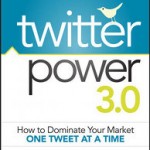
Click to buy Twitter Power 3.0
Comments:
Filed Under: Books




























